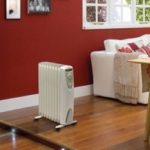How does the plinth household heater
Plinth heater is a whole heating system. It allows you to get the most comfortable temperature in a heated room. This is due to the special layout and design of the device.
The heating system is located around the perimeter of the entire room under the baseboard, thereby creating a comfortable environment due to rapid heating and the ability to maintain a given temperature. It is a variety convector.
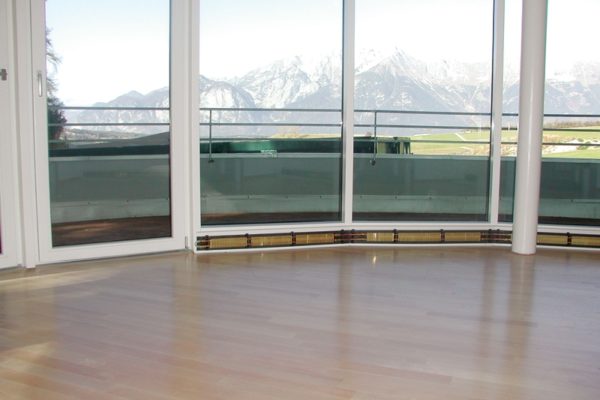
Content
Operating principle
The basis of the transfer of thermal radiation by this method is not the amount of energy, but its quality. Such a system is very convenient, due to the fact that the heat from under the baseboard rises up and is a kind of curtain from street weather conditions. Going on heating the walls so that the whole room warms up evenly and comfortably. Thus, favorable conditions for human life are created.
The plinth heater allows to reduce energy costs by 50%, in comparison with classical heating appliances.
The use of "warm plinth" practically does not have active convection, due to which the amount of dust in the air is reduced to zero, which also forms a healthy climate. Besides the fact that such a heating system is able to create a kind of thermal curtain, it protects the walls from excess moisture, due to which apartment owners may face problems such as mold or fungus development. Heaters with little effort can be built directly into the walls or even in the basement of the built-in kitchen. There are also models of convectors, which built into the windowsill or mounted under the floor.
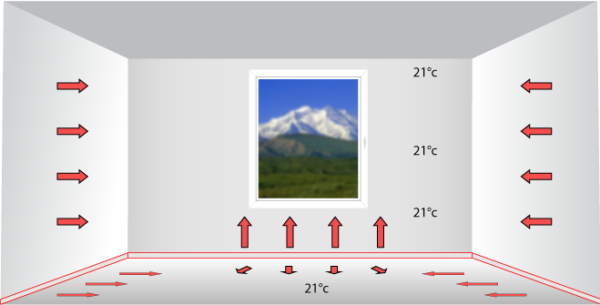
The system is able to fit into any interior thanks to the practical form of the plinth.
The spread of cold air is blocked in minutes after being turned on. The floor along with the walls warms up very quickly, and then they begin to radiate heat.
Design features
Heaters of this type can easily fit under a baseboard with a height of 134 mm and above and a thickness of 29 mm. As an energy source can be used: liquid or electrical energy. The system is easily mounted together with other boiler equipment and can be used not only as an additional, but also as the main one.
Warm skirting is not always installed around the perimeter of the room. If desired, you can use only part of the installation.
Installation is as simple as possible; for this, the heating elements are carefully placed in special brackets, which can later be decorated with a special casing made of metal, wood or any other material. In order to make the plinth, you can choose almost any woodbased on your desire. For the casing, exclusively high-quality and necessarily dry wood should be used to prevent deformation. You can also use other equally convenient and high-quality materials, such as: tile, natural stone, etc.
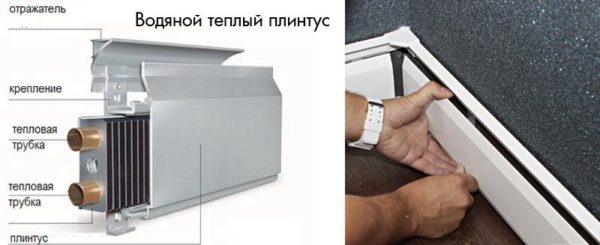
Scope of application
Many people mistakenly believe that baseboard heaters are used exclusively in apartments or private homes.This is absolutely not true, because such systems are very popular in kindergartens, medical institutions, hotels and even offices and non-residential premises.
In a country house, plinth heaters are more than relevant, due to the high level of energy savings, ease of installation and the ability to connect to weak networks.
In rooms with high ceilings, classical heating is inefficient, so this equipment will be an excellent alternative. If you mount a warm plinth directly into the basement of the kitchen, then you can safely put the furniture by the windows.
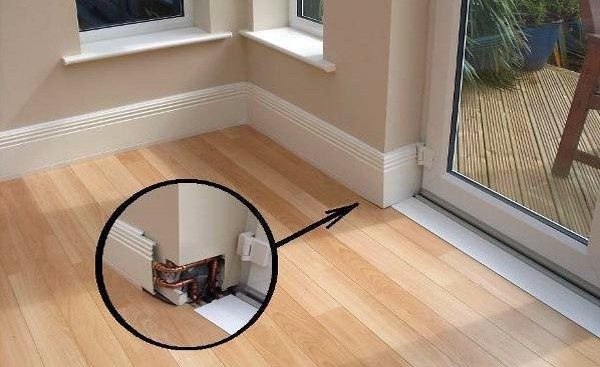
Water heating option
Plinth heating systems can operate on the basis of a liquid that will heat up and flow through special abrasion resistant pipes. Thanks to special technical solutions, the diameter of the pipes remains the same throughout the entire period of use. The material absolutely does not allow oxygen, so you can eliminate premature corrosion.
Water heaters install along the walls. Where they are not required, for the integrity of the view, you can put the profile of the system, which will be empty inside.
The plinth for space heating is very quickly mounted and also adjustable. If you take a water system, for effective heating of a hundred-square-meter room, all you need is 8 liters of water. For maximum comfort, there is the possibility of autonomous regulation. Thus, every room creates comfort with a large share of savings. Heat losses reach a minimum due to an increase in the speed of the fluid. The average comfortable temperature of such plinth is around 50 degrees Celsius.
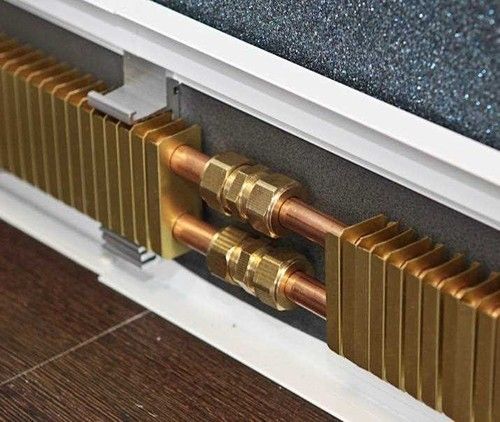
Electric heating option
The baseboard heater may be heated by an electrical element connected to the network. Electrical connection is based on silicone. heat resistant cablewhose heat resistance reaches 300 degrees Celsius.
Such a system can be connected to an ordinary electrical network of 220 V. The amount of supplied energy is regulated using a thermostat.
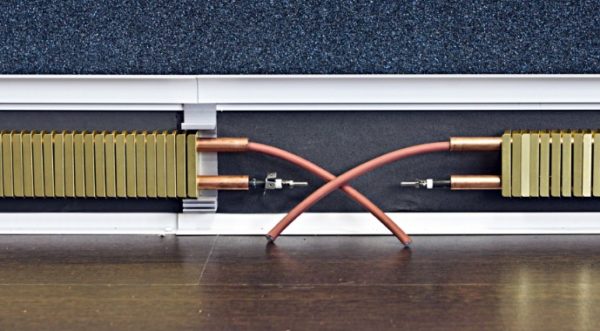
Temperature control
In each room, a thermostat is integrated into the system - for local temperature control.They can be thermomechanical or electronic.
Thermomechanical thermostats manually configured in each individual room. Once the mode is built, you can no longer touch these systems.
Electronic thermostat independently changes the rate of supply of electricity or liquid and, depending on the situation, increases or decreases it.
The system can also be connected to external thermostats. In this case, the heater will change its temperature depending on the weather outside the window.
Recently, plinth systems are connected not only to the centralized heating, but also to the technologies of “smart houses”.
Warm skirtings have several undeniable advantages:
- Create a unique cozy microclimate.
- They heat not only the walls, but also the floor.
- Save energy.
- Have the maximum efficiency.
- Heat is distributed as evenly as possible, optimally, according to the specified parameters.
- Easy to install.
- They give an opportunity to use practically in any premises, even with a large number of windows and high ceilings.
- Have the design allowing to fit successfully into any interior.
- Quickly regulated.
In addition to all the above advantages, baseboard electric heaters do not create active convection, which reduces the amount of dust in the room and allows its inhabitants to breathe freely.

/rating_on.png)
/rating_off.png)






